On 25 September 2015, the 2030 Agenda for Sustainable Development was adopted by 193 member states at the United Nations, which began the innovative, collaborative framework known as the Sustainable Development Goals (SGDs). A plan of action for people, planet, and prosperity, the SDGs contain 17 goals and 169 accompanying targets to scale up an agenda to end poverty, heal and secure the planet, and shift development onto a sustainable and resilient path by 2030. All stakeholders—governments, businesses, non-governmental organizations, and more—are involved in implementing SDGs, including non-profits, academics, social enterprises, governments, the private sector, think tanks, philanthropic organizations, and civil society. The private sector, especially businesses, has a strong role to play in incorporating the SDGs into their business practices and philosophies. The SDGs present businesses opportunities to accelerate social impact and sustainability to make a lasting impact with responsible business practices and investments internally and externally.
Sustainable Development Goals & the Business Perspective
Importantly, the SDGs present a strong policy signal for businesses to shift towards more sustainable practices or be left behind. According to a 2019 study conducted by UN Global Compact and Accenture, 87% of CEOs believe the SDGs provide an opportunity to rethink approaches to sustainable value creation and 48% of CEOs are implementing sustainability into their operations.
In the past, sustainability was often viewed as a peripheral “green” issue; however, it is now seen as a challenge that can limit their potential to grow and ability to operate. On a global scale, challenges include a diminished critical natural resource base, economic inequities that limit local purchasing power, and a lack of quality workforce due to limited education and health resources.
With the increasingly globalised world, businesses must also address increasing urbanisation, changing consumer preferences, evolving investor perspectives, and weak financial markets. SDGs provide a framework for adopting business policies that achieve better outcomes. Sustainability practices, in particular, focus on corporations generating wealth while conducting their businesses without negatively impacting the environment, society, and the economy generally. However, businesses’ corporate sustainability strategies now need to focus on making a positive impact on at least one core one area: improving the environment and/or society.
Companies are often interested in many SDGs, but many of them end up “cherry picking” the SDGs relevant to their business operations; rather than addressing all 17 SDGs. Typically three SDGs out of the 17 are most popular for implementation, because they have the most direct (and obvious) impacts on business.
- Goal 8: Economic Growth and Decent Work to promote sustained, inclusive, and sustainable economic growth, full and productive employment, and decent work for all.
- Goal 12: Responsible consumption and production to ensure sustainable consumption and production patterns.
- Goal 13: Climate Action to take urgent action to combat climate and its impacts.
However, companies will need to think a little creatively about addressing other SDGs, such as Goal 2: Zero Hunger or Goal 3: Good Health and Well-Being, and how to address these throughout their business practices. It could be with volunteer programs, donations to a non-profit, or building a medical clinic in an area where they operate. Also, companies have opportunities to invest in or start businesses that focus on other environmental causes besides climate change, such as protecting or restoring forests, reefs, and wetlands, and supporting the transition to regenerative agriculture, which address the SDGs Goal 7: Affordable and Clean Energy, Goal 14: Life Below Water and Goal 15: Life on Land.
Where SDGs and ESG meet for better corporate sustainability practices
Currently, SDGs are the leading policy framework for companies to implement sustainability initiatives into their operations. SDGs build upon corporate sustainability to encompass and define key criteria for improving business practices to be more conscious of the environment, ensure resilient supply chains, and maintain license to operate within their communities. Some of the SDG metrics include the amount of carbon emissions offset through the purchase of carbon credits, or the number of workers trained on new skills for their employment. Businesses can also tap into a number of international data platforms to determine how well they are doing with implementing SDGs and whether their programs are effective. They set out key criteria by which businesses can define and measure improvements, especially for those companies aiming for Environmental, Social, and Governance (ESG) performance targets.
SDGs enable companies to be more proactive in creating long-term and equitable development for business, society, and the environment. Many companies have pivoted towards incorporating ESG issues into their business practices to attract investment. These ESG metrics are being used by investors today, more than ever before, for financing considerations, which include indicators that measure an organisation’s ethical impact and sustainability practices. Investors look towards a company’s carbon footprint, water usage, net zero strategy, community development programs, board diversity, and transparency in decision making.
How businesses can apply the SDGs in their practices
Organisations can incorporate SDGs into a number of business activities and strategies, such as for decision-making purposes or evaluating supply chains. According to PwC, 71% of global businesses surveyed have already started to act on how to implement the SDGs in their practices. Yet, most organisations are struggling to classify what SDG-relevant tools are needed, such as impact assessments or geo-spatial mapping tools, with only 13% identifying tools to use and only 29% of businesses have set goals.
Here are some actions that business can take now to incorporate SDGs into their business plan.
- Choose the SDGs most important to the organisation. According to KPMG, 84% of top companies have identified the SDGs that are most relevant to their business. However, not all businesses will be able to implement each one of the SDGs (and their sub-targets), so developing a strategy around at least one, such as SDG No. 13: Climate Action, and picking a relevant project, like regenerating native forests that sequester carbon, can help jumpstart the SDG journey. Once the goals are identified, they can be linked to specific business activities and integrated into corporate strategies. Businesses can define their priorities by considering which SDGs will have the biggest impact in terms of risk, opportunity, and reward over the medium- and long-terms, such as addressing inequality due to business impacts (SGD No. 10) or reducing single-use plastic waste (SDG Nos. 13 and 14) as part of a corporate sustainability plan.
- Develop SDG targets and KPIs. The 17 SDGs have 169 accompanying targets aimed at achieving specific goals. Once the company has identified their priority SDGs, it will need to develop a strategy to implement associated targets as well as establish its key performance indicators (KPIs) to monitor and communicate progress. For existing targets and reporting metrics already in place, these should also be aligned with the new KPIs to ensure they work towards SDG goals.
- Communicate and educate stakeholders about SDGs. Knowledge of SDGs in the business community is relatively high at 92%, but the general population is much lower at 33% awareness of SDGs. Businesses, therefore, can include communication and education campaigns in their marketing and operational practices to help inform stakeholders about SDGs and how they are acting to implement them. The demand is there—citizens want businesses to adopt SDGs. 90% of consumers surveyed believe that businesses should adopt the SDGs and 78% would more likely to spend their money on goods and services from these companies.
- Examine current business operations. Current corporate sustainability and business strategies should be examined to determine whether or not they align with SDGs. Companies can identify which business models can be adjusted to account for these new targets and what new products or services to be developed. They can refocus innovation and research and development as well as determine what supply chains need to be changed. For example, SDGs No. 12 Responsible Consumption and Production, No. 13 Climate Action, No. 14 Life Below Water and No. 15 Life on Land are often associated with supply chains. Further, companies can realign sustainability strategies to achieve both corporate and SDGs-centered goals.
- Invest in climate mitigation. Companies are part of the global net-zero campaign to be carbon-neutral by 2050 (SDG No. 13: Climate Action). They can start by adopting, investing, and implementing climate mitigation practices into their organization. Some of these activities are as simple as installing energy-efficiency lightbulbs in their buildings, investing in carbon credits from quality projects, to investing in on-site renewable energy capabilities. High quality and high integrity carbon projects can help businesses achieve their multiple SDG targets and effectively offset their carbon emissions to mitigate climate change. Good projects address multiple SDGs, improving local economies, livelihoods, education, and ecosystems. However, businesses need to ensure that their carbon projects are certified so they have quantifiable, verifiable, and real greenhouse gas emissions reductions.
- Measuring and reporting. As SDGs become the norm, businesses will need to better measure and report their SDGs-focused KPIs. They will be held more accountable by investors, stakeholders, civil society actors, and shareholders. All business goals and targets should be linked to a specific SDG and incorporated into the core business and reporting cycles, such as through mandatory disclosures, performance reviews, and even integrating SDGs into everyday business decisions.
Business benefits of aligning with the SDGs
Adopting SDGs into business practices can unleash a significant opportunity to combine purpose, profits, and sustainability. By responding to global challenges, threats, and risks, companies can use the SDGs to turn them into business opportunities through their policy frameworks and reporting metrics.
- Expanding into new markets. According to the Business and Sustainable Development Commission report, Better Business Better World, business models related to the SDGs could open up opportunities worth up to US$12 trillion and increase employment up to 380 million jobs by 2030. As more global investment is directed towards meeting SDGs, new markets will be unlocked that focus on sustainable products, jobs, and technology. Sustainable markets involve those trying to reuse and recycle single-use plastics to avoid further carbon emissions as well as land and ocean pollution; to improve water quality and quantity through green infrastructure and nature-based solutions; and promote biodiversity and ecosystem services through restoration of native forests, grasslands, and reefs.
- Using more resilient supply chains. Examining current supply chains with an SDG focus can help businesses utilise ones that are greener, sustainable, resilient, efficient, and more ethical and inclusive as well as streamlining operational efficiency to reduce costs and waste.
- Amplifying social and environmental impacts. With more holistic thinking, companies can have more effective social and environmental impacts in the communities where they operate as well as those who are impacted by their business operations. This aspect is crucial as part of maintaining social license to operate.
- More investment interest. Businesses that adopt SDGs will also spur new opportunities for investors interested in impact investing as well as opening up new channels of public and private financing, such as through green bonds which support reforestation or regeneration projects.
- Being ahead of the curve. As more countries adopt SDG-focused requirements, companies that have already integrated SDGs into their business practices will be ahead on any regulatory reporting requirements and managing risks.
Embedding Sustainability and SDGs into Corporate Strategies
Sustainability can drive innovation by providing a framework that promotes new business models which drive progress towards the SDGs and opportunities for future growth. Also, business can identify new partners within sectors and across different industries to enable organisations to scale up their efforts to reduce emissions, such as working with farmers to invest in regenerative agriculture projects or sourcing a new, less-carbon intensive material to make a better business product.
As businesses have become more aware of the need for sustainability and implementing the SDGs, the importance of building a sustainable culture in organisations has never been greater. Businesses can develop their strategy that clearly outlines how sustainability (and the SDGs) is a key focus in all aspects of the organisation, from developing a new mission statement, to complex business decision-making incorporating sustainability goals, to human resources management and sustainability KPI reporting. Incorporating sustainability into business practices enables companies to inspect all aspects of their operations, including how they think about their supply chain from purchasing to sourcing, implementing water and electricity conservation and recycling, implementing safer chemical management, buying energy efficiency products, and even employee training for work and lifestyle changes to reduce their carbon footprint.
Sustainability and the SDGs offer businesses many opportunities to streamline their operations to use less resources, expand into new markets, attract new talent, address risks in supply chains, build social capital in communities where they operate, and obtain new finance and investment flows. Companies around the world have a significant role to play to implement the SDGs and become better global actors to improve profits, people, and the planet. It all starts with a plan and innovative thinking.







